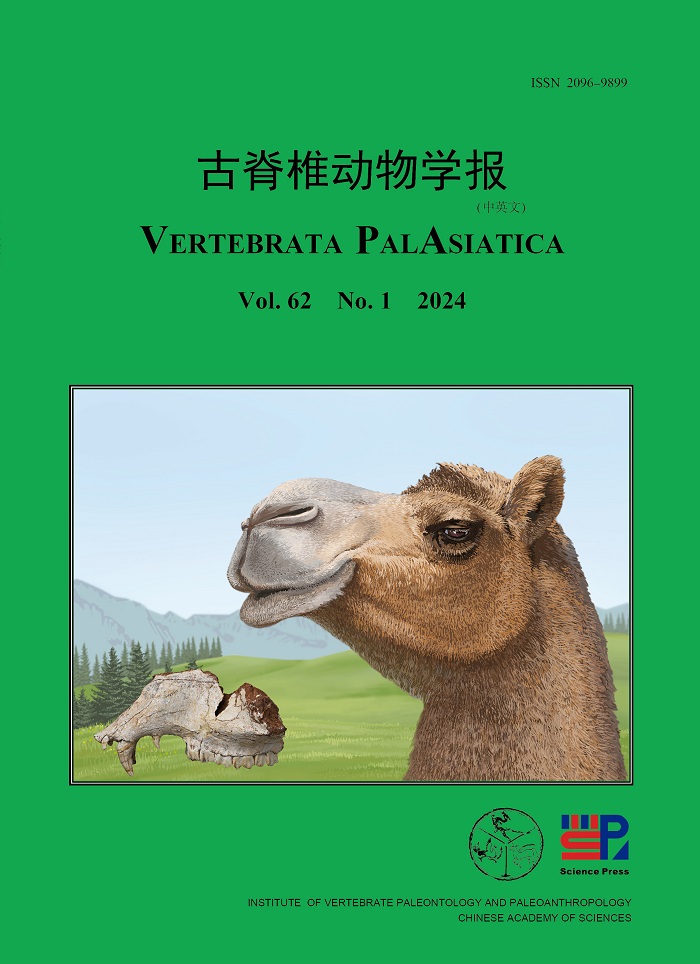

封面说明:巨副驼头部复原图。起源于中始新世的骆驼科是在北美新生代期间演化非常成功的类群,其中的一个支系约在中中新世期间经白令陆桥迁徙到欧亚大陆。我国境内最早发现的化石骆驼——巨副驼,曾被认为是起源于北美的硕足驼(Megatylopus)。最近在大连复州湾骆驼山金远洞第四纪堆积中出土了巨副驼头骨化石,其形态特征表明巨副驼的直接祖先应该类似于晚上新世分布在欧亚大陆的体型稍小的阿氏副驼或相似类型;而巨副驼的直接后裔是诺氏驼。巨副驼在早更新世的1.1~1.52 Ma栖息在辽东半岛的森林草原环境中。详见本期董为等人文。(绘图: 许勇)
Cover image: The reconstruction of the head of Paracamelus gigas. Originated in North America in the Middle Eocene, camelids were a successful group. A few of them emigrated to the Old World probably during the middle stage of the Middle Miocene. Paracamelus gigas was the first reported fossil camelid in China and was considered as originated from Megatylopus of North America. Recent study of P. gigas skull found from the Early Pleistocene deposits at Jinyuan Cave in Dalian in Northeast China indicates that it may originate from a form similar to P. alexejevi in the Late Pliocene in Eurasia, and its direct descendant may be Camelus knoblochi. Paracamelus gigas inhabited in the forest steppe environment of Liaodong peninsula from 1.1 to 1.52 Ma. See details in the paper of Dong et al. (Illustrated by Xu Yong)